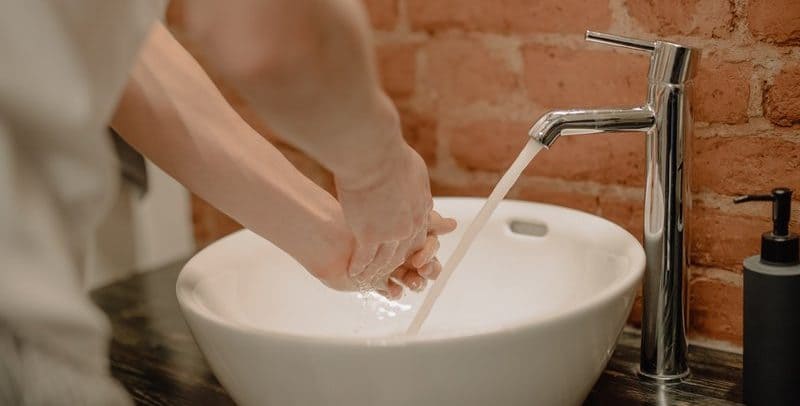
Are Instant Hot Water Systems Worth It?
Always lived in homes where your water gets heated in storage tank systems? Not only do you often find yourself running out of water when you need it most, but the running costs can take their toll on your household finances as well. This is where instant hot water systems can greatly benefit your home.
In a world where everything is automated or instant, it comes as no surprise there are instantaneous hot water systems. Also referred to as continuous hot water systems or continuous flow system, they provide you with virtually endless hot water, and you only pay for the water you use.
Additionally, there’s no need for those ugly, bulky storage tanks as instant hot water is a discreet wall-mounted tankless system. Let’s look further into how continuous flow systems go about heating water, and how they can benefit you.
How Will An Instant Hot Water System Benefit Me?
The primary benefit of an instant hot water system is that it only heats water as you need it. Compare this to storage tank systems that continuously work to heat water and maintain its desired temperature, even when you don’t need it. You heat the entire tank, regardless of whether you use it or not. This adds to your overall running costs.
How Does It Work?
When you turn on the hot water tap in the kitchen or bathroom, it triggers a flow sensor that activates a gas burner or electric element. This element heats water in a serpentine copper tube wrapped around a heat exchanger. The system then pumps out the hot water, delivering it to the fixture, as cold water flows in to replace it. As long as the hot water tap remains on, the system keeps heating the water continuously. Turning off the tap also shuts down the heating element or burner.
Generally speaking, it is more cost-effective, environmentally friendly and energy efficient to choose instant gas hot water as your energy source. However, whenever natural gas is not available, electric instant hot water is the alternative.
What Size Do I Need?
Unlike traditional water heaters, continuous flow hot water systems are tankless! This means there is no particular size specifically designed to suit your home’s needs. Rather, you need to look for a flow rate that will meet your water demands. Flow rate is the amount of water in litres that the continuous flow hot water system can heat and deliver per minute.
You will find flow rates typically range between 10 to 32 litres per minute. When selecting a flow rate, you can’t just look at the number of bathrooms and people in your home. You will also need to consider:
- How many people take showers at the same time?
- Do you use hot water for your dishwasher or washing machine?
- Are people in the shower at the same time that you’re using the dishwasher or washing machine?
- Do showers have water-saving shower heads installed?
Choosing the right flow rate will help you to avoid paying more upfront than you need to. It might also result in more cost-effective operating costs.
Is A Continuous Hot Water System Safe?
Yes! Instant hot water systems are arguably safer than storage tank water heaters.
When you have a water tank-based system, there’s always the risk of stored water growing bacteria. This is why the thermostat for storage-based electric or gas hot water systems is always set to a minimum required temperature of 60°C. Bacteria such as Legionella can grow in water sources, such as a water tank, and cause you to develop the lethal Legionnaires’ disease and Pontiac fever.
90% of Legionella die in 2 minutes in 60°C water. In water above 70°C, all Legionella die almost instantly. But unfortunately, thermostats can become faulty or accidentally knocked without anyone realising it. If this occurs, your storage tank is at risk of growing this bacteria.
The Risk of Corrosion
Storage tanks will also corrode over time. When this happens, you might start to see rust in your water. Instant hot water systems don’t store water in the first place, so they never run the risk of growing harmful bacteria or rusty water!
Because you don’t need to heat the water as much, you can also significantly reduce the risk of burns from water that is too hot. Australian standards actually require that storage tanks include a tempering valve that restricts the water temperature to 50°C for personal hygiene use (i.e. bathroom and shower). To minimise the risk of scalding, these valves mix cold water with your 60°C hot water supply from the storage tank to reach the 50°C maximum. This valve is made redundant by instant hot water systems, as the thermostat of these systems can directly be set to 50°C!
How Long Do Instant Hot Water Systems Last?
The typical storage tank hot water system will last you anywhere between 8 and 12 years with proper maintenance. We have found that instant hot water systems tend to last longer than their storage tank counterparts. It’s not uncommon to see them last up to 20 years!
In order to get the most out of your new hot water system and ensure it is running efficiently, it needs regular servicing. This will not only extend the life of your instant hot water system but will mean you won’t be wasting water and energy where you don’t need to.
Does Instant Hot Water Save Money?
When installed appropriately, an instant hot water system will save you money in the long-term. Yes, they can be more costly upfront to install. But you will save money by only paying for the hot water you use. You won’t need to worry about heat loss from a storage tank either.
On average, we have found that instant hot water systems last longer than storage tanks as well. Coupled with energy savings and the absence of sacrificial anodes that need to be replaced every so often as is the case with storage tanks, the power of instant hot water will be sure to make your wallet happy.
With a continuous flow system, you’ll use less energy on your hot water. You’ll also be contributing less carbon dioxide and greenhouse gas emissions to the atmosphere. So your instant hot water system will benefit both your wallet and the environment!
What are the Downsides of Instant Hot Water?
If instant hot water systems are so good, why doesn’t every single home have one? Despite the many benefits and advantages that come with instant hot water, there are some negatives as well.
As it turns out, you don’t actually get hot water instantly despite the ‘instant’ hot water heater name. You do have to wait a short spell between turning the tap on and the water reaching the set temperature. It doesn’t take long, but you can experience some additional water waste while waiting for the heat.
In order to heat the water, you do need a certain amount of water to flow through the hot water tap. A combination of low-flow showerheads and a trigger flow rate set too high might mean your shower won’t trigger water heating! You can, however, easily avoid this by using a licensed plumber and informing them of fixtures that might affect this.
The Right Flow Rate Is Essential
The final concern with instant hot water is that the flow rate may not meet the demands of a large family. When the hot water demand exceeds the output of the instant water heater, you might experience low water pressure. This is simply because the hot water is being thinly spread to give everyone hot water. Scheduling hot water use so that demand doesn’t exceed the flow rate output will avoid this. For homes with stubborn family members who won’t budge on their shower time, a storage tank hot water system might be better suited.
Natural Gas, Solar and More!
Still not sure if an instant gas hot water system is the right choice for your home? We have Hot Water Systems: The Complete Guide to help you pick the best option for your home. We know everything there is to know about hot water and can help you pick between instant hot water systems, heat pumps, full electric systems, hot water heaters and more.
To learn more about continuous flow systems, contact Metropolitan Plumbing.
Published: 2020-07-24

















